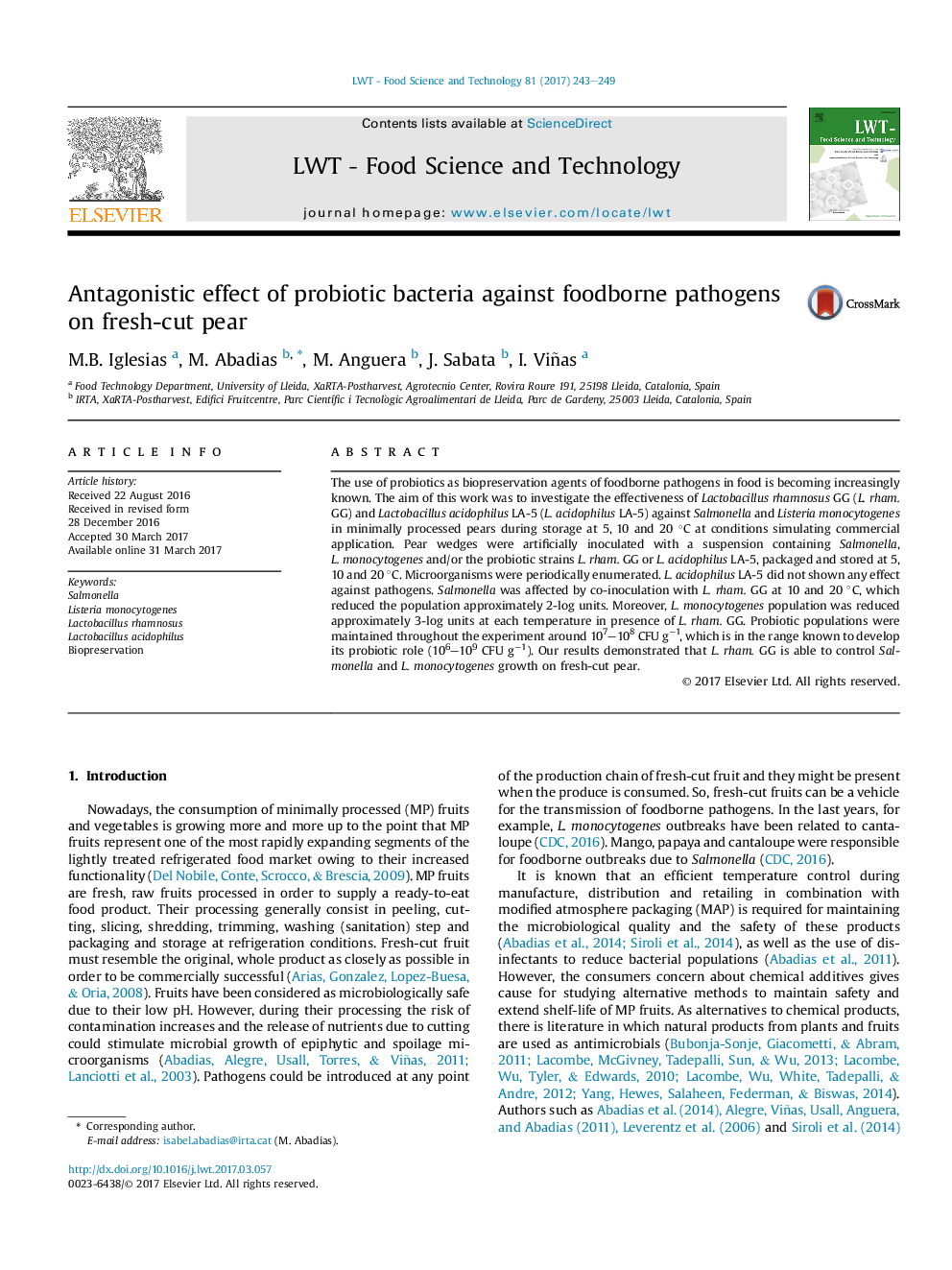| Article ID | Journal | Published Year | Pages | File Type |
|---|---|---|---|---|
| 5768496 | LWT - Food Science and Technology | 2017 | 7 Pages |
â¢L. rham. GG and LA-5 were evaluated as biopreservative on fresh-cut pear.â¢L. rham. GG reduced Salmonella and L. monocytogenes population at 5, 10 and 20 °C.â¢LA-5 did not show efficacy against Salmonella and L. monocytogenes.
The use of probiotics as biopreservation agents of foodborne pathogens in food is becoming increasingly known. The aim of this work was to investigate the effectiveness of Lactobacillus rhamnosus GG (L. rham. GG) and Lactobacillus acidophilus LA-5 (L. acidophilus LA-5) against Salmonella and Listeria monocytogenes in minimally processed pears during storage at 5, 10 and 20 °C at conditions simulating commercial application. Pear wedges were artificially inoculated with a suspension containing Salmonella, L. monocytogenes and/or the probiotic strains L. rham. GG or L. acidophilus LA-5, packaged and stored at 5, 10 and 20 °C. Microorganisms were periodically enumerated. L. acidophilus LA-5 did not shown any effect against pathogens. Salmonella was affected by co-inoculation with L. rham. GG at 10 and 20 °C, which reduced the population approximately 2-log units. Moreover, L. monocytogenes population was reduced approximately 3-log units at each temperature in presence of L. rham. GG. Probiotic populations were maintained throughout the experiment around 107-108 CFU gâ1, which is in the range known to develop its probiotic role (106-109 CFU gâ1). Our results demonstrated that L. rham. GG is able to control Salmonella and L. monocytogenes growth on fresh-cut pear.
